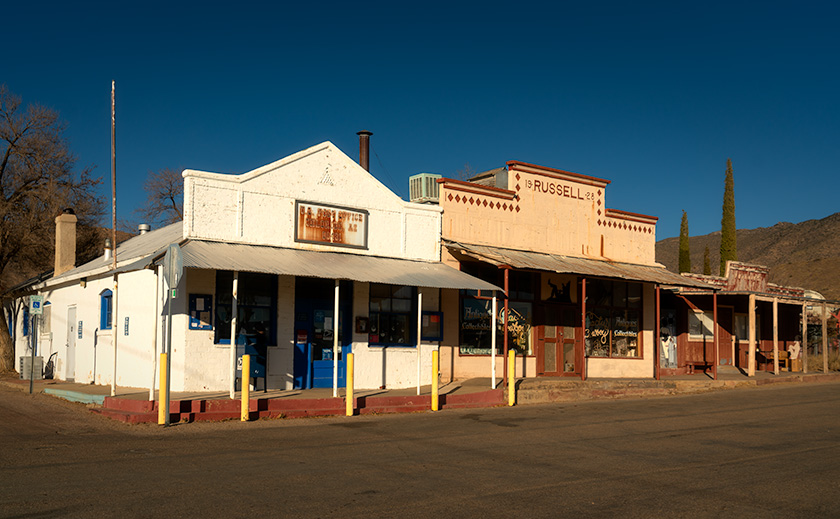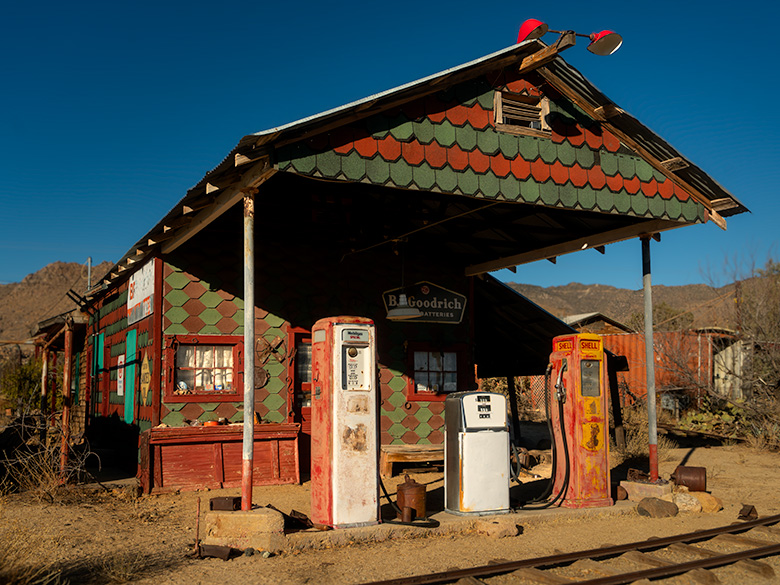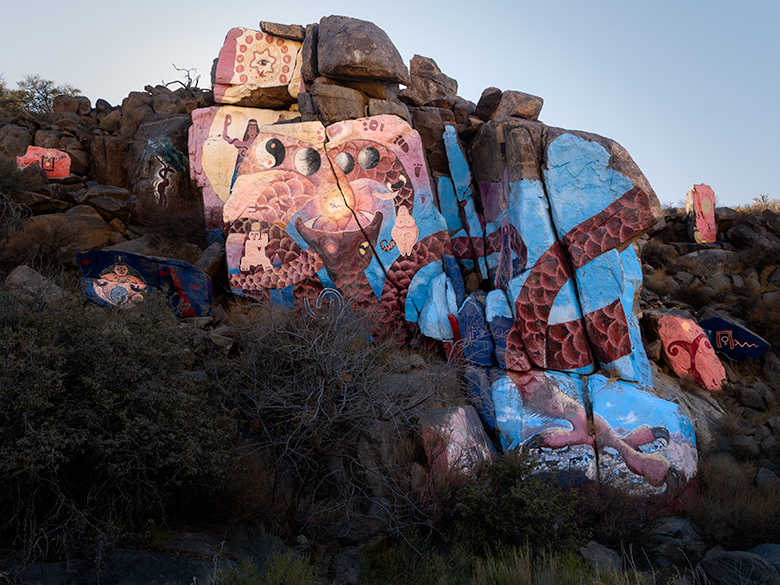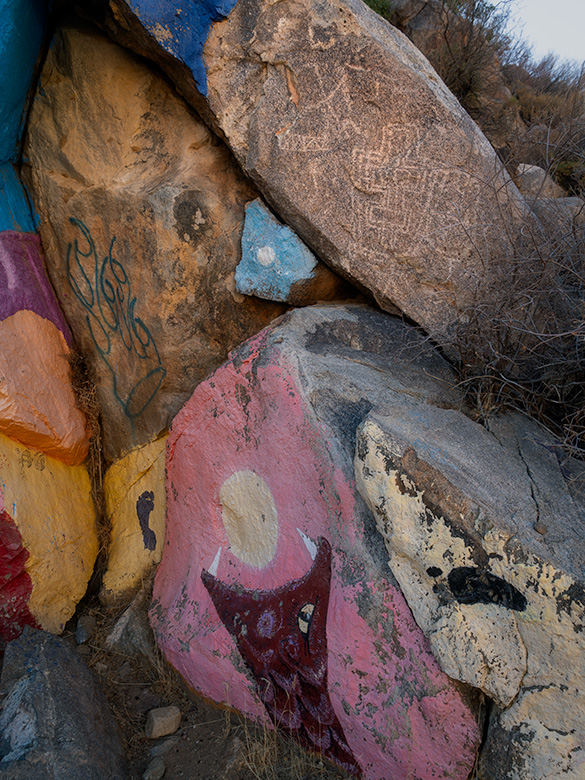
We’re always looking for fresh material to share with you, so I turned to my trusty wall map and noticed a glaring gap in our travels—Mohave County. Curious, I paired my map-gazing with a quick Google search and a nudge from my AI brainstorming partner, ChatGPT.
“Besides Bullhead City—which, let’s face it, is mostly about gambling—what’s worth exploring in Mohave County?” I asked.
The response? “Chloride.”
“Chloride? Why Chloride?” I countered.
The answer? “Get off your duff and go find out yourself.”
Suddenly, it felt like I was stuck between two Queen Annes, demanding action and sass in equal measure. With that, the adventure began.
The Road to Chloride.
Thinking about the journey to Chloride made me shudder. Traffic at the I-40 and US 93 junction is always a nightmare, with semis and cars lined up for miles waiting to transition. And there’s always that one clown in a big rig who turns right onto 93, then immediately swings left to reach the Flying J. It’s like a slow-motion ballet of bad decisions.
Surprisingly, when I braced for the worst, the roadwork wasn’t as bad as I’d imagined. They’re already building a bypass around town, going to Coyote Pass, where the freeway picks up north of Kingman. For once, progress felt like it was helping.
Back then, US 93 was a rutted, narrow, two-lane road where only the brave dared pass. Now, it’s a rutted, crowded four-lane highway with so many potholes that you must dodge; you’d be foolish to speed down it. Even my trusty Turd struggles to keep up with the mad rush to throw money away in Vegas. Semi-trucks blink their headlights at me as if to say, “Move it, grandpa!”
US 93 cuts through a vast desert basin known as Golden Valley, flanked by the Cerbat Mountains to the east and one of Arizona’s many Black Ranges to the west. The valley’s name hints at riches, but today, it’s primarily low-density sprawl—cheap land attracting slow but steady growth. However, this is still the Mohave Desert, and with limited rainfall, water is a growing concern for the area’s future.

Chloride the Town.
Chloride proudly claims to be Arizona’s oldest continuously inhabited mining town, with roots dating back to 1863. However, mining didn’t boom until the 1870s, when a treaty was signed with the Hualapai Indians, allowing for more significant expansion. By 1917, the town’s population peaked at around 2,000, but by 1944, mining had declined, and Chloride teetered on the edge of becoming a ghost town.
Not that the current residents see it that way. Unlike places like Jerome or Oatman, which fully embrace their ghost town status, Chloride’s locals still treat it as a living, breathing community—even if it’s quieter these days.
Chloride gets its name from the chloride compounds mined here, which have historically been used in chemical warfare, medical applications, and industrial processing. Various chloride forms have been used for everything from hospital disinfectants and intravenous solutions to de-icing roads and manufacturing plastics. The US military even experimented with chloride-based compounds for early chemical warfare research.
When the first mine played out, a more extensive operation opened several miles south, and many of the original miners commuted rather than relocated. Today, the new mine still creates rush-hour traffic jams during shift changes.
Much like my hometown of Congress, the town’s population is aging, and there’s no new construction. The nearest grocery store is 35 miles away in Kingman, and the closest Costco requires a road trip to Las Vegas. Local businesses include a restaurant, a B&B, and a gas station, where the prices are as inflated as a carnival balloon.
Antique stores dot the town, though most wares are old mining relics rather than fine china. And while the air is fresh, thanks to constant winds, the lack of rainfall in this part of the Mohave Desert makes long-term growth challenging.

The Murals: The Secret Reason to Visit Chloride.
The murals are the real reason to detour off the highway and visit Chloride. Yet, the locals don’t seem to market them at all. There’s no sign on US 93 pointing the way, and if it weren’t for a few boulders painted with rough directions, you might never find them.
Just before stepping into the Chloride visitor center—which also happens to be the town store—we crossed paths with a man straight out of a ZZ Top album cover.
He had a grizzled white beard that tumbled past his chest, sunglasses that hid whatever stories his eyes might tell, and a dusty black cowboy hat that had seen some miles. His Dickies overalls were well-worn, and his plaid shirt looked like it had survived a hundred desert suns. He leaned against the store’s porch railing like he had all the time in the world.
We asked about the murals.
“Oh, yeah. Those things,” he said, shifting his toothpick from one side of his mouth to the other. “Just go up this road until it turns to dirt. Follow it through the wash if it ain’t flooded, then head up the hill.”
Not exactly GPS coordinates, but we made do.
The murals were first painted in 1966 by Roy Purcell, an artist working in the mines while taking a break from his MFA studies. With little more than house paint and a grand vision, he covered massive boulders with bold colors, cosmic symbols, and surreal imagery, turning the desolate mountainside into an outdoor gallery. In 2006, Purcell returned to restore the murals, brightening them back to their original vibrancy.
After almost 20 years of exposure to the brutal desert sun, wind, and sand, the colors remain as vivid as if they were painted yesterday—a testament to Purcell’s craftsmanship and the enduring magic of this hidden treasure.
The first thing that goes through your mind when you see them is: How did he get up there? Was this guy part goat? The murals span multiple rock faces, tied together by a serpent winding its way up the mountainside. Around the central panels, smaller satellite paintings orbit like star clusters hanging at the edge of the Milky Way.
You can’t stand in one place and take it all in simultaneously. The murals demand movement—walking the viewing area reveals new details from every angle, unfolding like a slow-motion kaleidoscope of color and meaning. In that way, Purcell’s work feels almost Dali-esque; its surreal and shifting forms reveal something different depending on where you stand. Like Picasso’s cubist portraits, each fragment works as part of a greater whole, forcing you to engage with it rather than passively observe.
Roy Purcell described his work as a visual philosophy, blending Eastern and Western ideas into something profoundly personal and universal. In his own words:
“I painted these images as an expression of self-discovery, a synthesis of my studies in Eastern philosophy and Jungian psychology, and an exploration of humankind’s place in the vast order of things.”
A word of warning: Wear good shoes. Trying to scramble over the rocks in Top-Siders, like I did, is a bad idea. Those slick-soled boat shoes might be great for gripping a yacht deck, but they turn you into a human tumbleweed out here. The terrain is steep, uneven, and unforgiving—so unless you have goat-like climbing skills or an excellent sense of balance, plan accordingly.
If rusty yard art and ghost towns are your thing, visit Chloride.
If art and hidden gems are your thing, visit the murals—you’ll be one of Arizona’s insiders.
And if you’re the kind of person who ignores all advice and climbs rocks in boat shoes? Well… at least you’ll have a good story to tell.

Final Thoughts.
Thanks for joining us on this mountainside adventure and enjoying this two-for-one special on ghost towns and hidden art. If you’d like a closer look at the murals and the town, larger versions of these photos are now posted in my New Work portfolio. They’ll stay there for three months—until something better comes along.
We’d love to hear your thoughts on Chloride, Roy Purcell’s murals, or anything near and dear to your heart—so drop a comment below. But do it soon! We close comments after five days, or we’ll be buried in Cyrillic spam up to our eyeballs.
Come back next month when we take another back road home.
Until then, keep your eyes on the road and your humor dry.
jw

Chloride who knew? Wow! Modern Art on the rocks – very colorful!
Purcell has an interesting perspective. Wonder how he decided to show his art in Chloride.
You as a goat in boat shoes made me smile. Is AI taking on the personality of Queen Anne? 🤣
I know! I keep learning more about this state with every newsletter. That’s why I think this is such a great job.
RE: Queen Annes – I just have that effect on women.